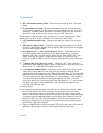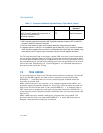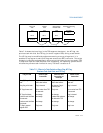
Vol. 3 7-11
TASK MANAGEMENT
7.2.5 Task-Gate Descriptor
A task-gate descriptor provides an indirect, protected reference to a task (see
Figure 7-6). It can be placed in the GDT, an LDT, or the IDT. The TSS segment
selector field in a task-gate descriptor points to a TSS descriptor in the GDT. The RPL
in this segment selector is not used.
The DPL of a task-gate descriptor controls access to the TSS descriptor during a task
switch. When a program or procedure makes a call or jump to a task through a task
gate, the CPL and the RPL field of the gate selector pointing to the task gate must be
less than or equal to the DPL of the task-gate descriptor. Note that when a task gate
is used, the DPL of the destination TSS descriptor is not used.
A task can be accessed either through a task-gate descriptor or a TSS descriptor.
Both of these structures satisfy the following needs:
• Need for a task to have only one busy flag — Because the busy flag for a task
is stored in the TSS descriptor, each task should have only one TSS descriptor.
There may, however, be several task gates that reference the same TSS
descriptor.
• Need to provide selective access to tasks — Task gates fill this need, because
they can reside in an LDT and can have a DPL that is different from the TSS
descriptor's DPL. A program or procedure that does not have sufficient privilege
to access the TSS descriptor for a task in the GDT (which usually has a DPL of 0)
may be allowed access to the task through a task gate with a higher DPL. Task
gates give the operating system greater latitude for limiting access to specific
tasks.
• Need for an interrupt or exception to be handled by an independent task
— Task gates may also reside in the IDT, which allows interrupts and exceptions
Figure 7-6. Task-Gate Descriptor
31
16
15
13
14 12
11
87
0
P
D
P
L
Type
0
31
16
15
0
TSS Segment Selector
1010
DPL
P
TYPE
Descriptor Privilege Level
Segment Present
Segment Type
4
0
Reserved
Reserved
Reserved


















